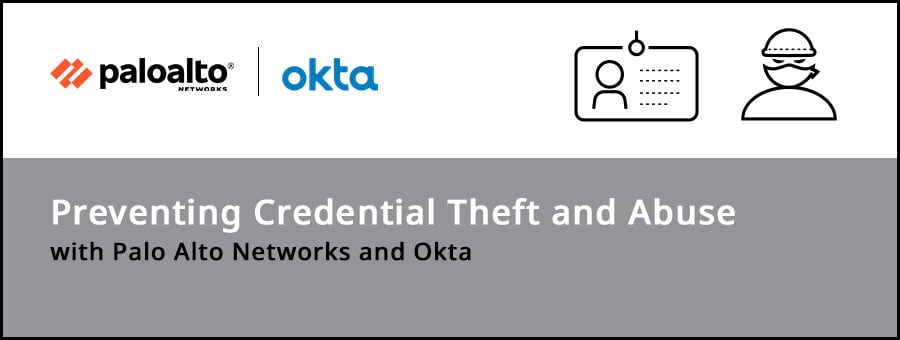
More than 80% of hacking-related data breaches involve weak or stolen passwords. Multi-Factor Authentication (MFA) thwarts almost all attempts at credential abuse. Unfortunately, enforcing MFA for all resources—including legacy applications and servers as well as SaaS applications— can be a challenge for IT and DevOps.
The Okta Identity Cloud makes it easy for organizations to securely connect their users with the resources they need to do their jobs. Okta centralizes access to SaaS apps, web access management (WAM) systems and custom web apps, APIs, and infrastructure. With one set of credentials, users can access all of the resources they need to be productive, wherever and on whatever device they choose.
Palo Alto Networks Machine-Learning-Powered Next Generation Firewalls inspect all traffic, including all applications, threats, and content, and tie that traffic to the user, regardless of location or device type.
Palo Alto Networks and Okta work together to prevent successful phishing attacks and credential abuse as well as simplify MFA deployment and management. Through granular security policies and constantly updated protections that counter the latest threats, Palo Alto Networks NGFWs prevent users from entering corporate credentials into risky or unsanctioned applications in addition to phishing websites that mimic valid ones. By leveraging Okta Adaptive MFA, you can require a second, higher assurance factor before allowing access to corporate resources, mitigating the risk of exposed credentials.
Use cases include:
- Protecting Critical Systems from Unauthorized Access
- Meeting Compliance Requirements
- Deploying Seamless Single Sign-On
Please contact your local Exclusive Networks Account Manager to learn more about the benefits of the Palo Alto Networks and Okta integration, such as
- Detecting, blocking, and preventing phishing attacks.
- Reducing your attack surface by preventing misuse of credentials.
- Ensuring only authorized users access your applications.
- Simplifying deployment of multi-factor authentication (MFA) across your organization.
- Enforcing MFA to critical systems such as SCADA and mainframe servers.
- Meeting compliance requirements for strong authentication and access controls.


